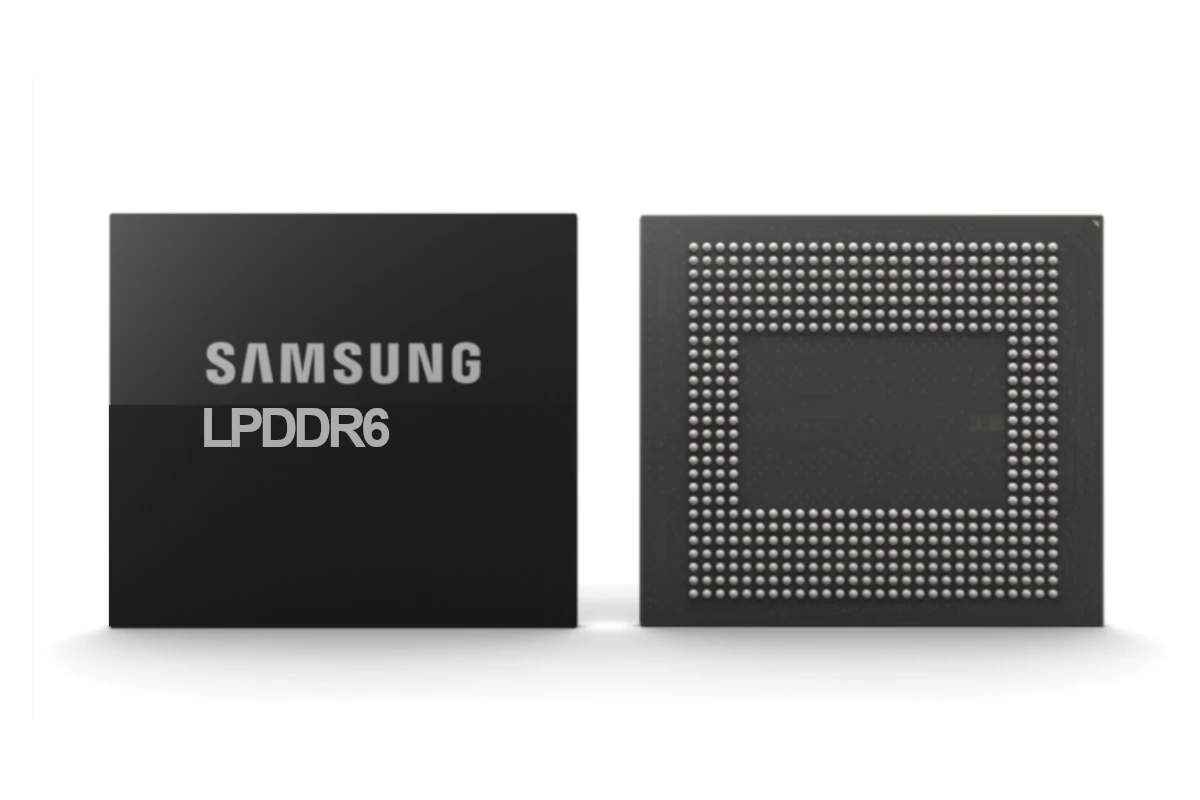LPDDR6 will bring big improvements to mobile devices and smartphones. It will make devices faster and more responsive, thanks to higher speeds and better power efficiency. These changes are important for supporting advanced features like AI calculations. LPDDR6, the next generation of mobile memory, is set to improve the performance and capabilities of smartphones and other portable devices. It promises faster speeds, better power efficiency, and increased capacity.
This new technology will likely become standard in future mobile and IT devices, pushing boundaries even further. Samsung and SK Hynix are at the forefront of this technology and may introduce LPDDR6 in their latest products soon. This new standard also promises better compatibility with advanced chipsets like Qualcomm’s Snapdragon 8 Gen 4, leading to improved user experiences across various devices. From faster data processing to energy savings, LPDDR6 has much to offer and is poised to revolutionize the user experience.
LPDDR6: The Future of Mobile Memory
Key Expectations for LPDDR6
- Faster Speeds: LPDDR6 promises significantly higher data transfer rates than LPDDR5, potentially reaching up to 8.5Gbps. This translates to quicker app launches, smoother multitasking, and faster data access for demanding applications like gaming and video editing.
- Improved Power Efficiency: LPDDR6 aims to deliver better power efficiency, which means longer battery life for devices. This is crucial for mobile devices, where power consumption is a major concern.
- Enhanced Performance: The combination of faster speeds and improved power efficiency will result in enhanced overall performance for smartphones, tablets, and other portable devices.
- Increased Capacity: LPDDR6 will likely offer higher memory densities, allowing for more RAM in devices. This could be beneficial for running memory-intensive applications and multitasking with multiple apps open simultaneously.
Leaked Information and Rumors
- Major Manufacturers Adopting LPDDR6: Several leading chip manufacturers have announced plans to adopt LPDDR6 in their upcoming products. This includes Qualcomm, Samsung, and MediaTek, among others.
- Integration into Flagship Smartphones: LPDDR6 is expected to be featured in flagship smartphones from various brands in the near future. This could potentially drive a significant increase in the adoption of LPDDR6 across the mobile industry.
- Potential Applications Beyond Smartphones: While LPDDR6 is primarily designed for mobile devices, there’s speculation that it could also find its way into other applications, such as laptops, tablets, and even wearables, due to its performance and power efficiency advantages.
Current Status and Future Outlook
| Aspect | Current Status | Future Outlook |
|---|---|---|
| Development: | LPDDR6 standards are finalized and chip manufacturers are actively developing compatible products. | Expect to see a wider range of LPDDR6 memory chips and devices hitting the market in the coming months and years. |
| Adoption: | Several major chip manufacturers have announced plans to integrate LPDDR6 into their upcoming mobile chipsets. | Widespread adoption in flagship smartphones and other mobile devices is anticipated, potentially becoming the new standard. |
| Impact on Market: | LPDDR6 could significantly impact the mobile memory market, driving competition and innovation among chip manufacturers. | This could lead to faster and more power-efficient memory solutions becoming available for consumers. |
Key Takeaways
- LPDDR6 offers higher speeds and better power efficiency.
- Samsung and SK Hynix lead in developing this memory.
- Improved performance and compatibility with advanced chipsets.
Evolution and Specifications of LPDDR Memory
The development of LPDDR memory has transformed cutting-edge technologies. This evolution enhances memory speed, reliability, and efficiency, critical for applications in mobile devices and AI.
Transition from DDR4 to LPDDR6
DDR4 was widely used for its high bandwidth and low power consumption. Yet, the demand for higher performance led to the creation of LPDDR memory. LPDDR4 offered improvements but was soon surpassed by LPDDR5. This new version reduced power use and increased speeds to 6,400 MT/s. LPDDR5X and LPDDR5T followed, further fine-tuning these enhancements.
JEDEC has taken steps to develop LPDDR6. It promises a significant speed increase, hitting 14.4 Gbps. This speed is crucial for tasks involving AI calculations and other data-heavy uses. LPDDR6 will be available as standard memory and in the new LPCAMM2 module, offering flexibility in usage.
LPDDR6 Standard Specifications
LPDDR6 brings notable specifications to the table. It is expected to operate at a frequency of 3,200 MHz, doubling the potential bandwidth compared to its predecessors. This boost allows for faster data processing and enhanced performance.
The power efficiency of LPDDR6 is a big advantage. It is designed to consume less energy, making it ideal for mobile devices where battery life is crucial. Lower power consumption also means less heat generation, which improves reliability.
JEDEC’s specification mentions LPDDR6 can handle speeds up to 14.4 Gbps, a 50% increase from LPDDR5. This change is vital for supporting high-performance applications, ensuring smoother and more efficient operations.
LPDDR6 Performance and Efficiency
LPDDR6 is set to redefine memory performance and efficiency. Its high speeds facilitate quick data transfer, essential for AI and machine learning tasks. This speed also enhances overall system performance, making it valuable for both consumer electronics and industrial uses.
Power consumption remains a central focus. LPDDR6 achieves lower energy use while maintaining high performance, which is critical for portable devices like smartphones and tablets. These improvements also help reduce heat, contributing to longer device lifespan and stability.
Reliability is another key factor. With advanced specifications, LPDDR6 ensures consistent performance even under heavy loads. This makes it a reliable choice for intensive applications, providing both speed and energy efficiency.







